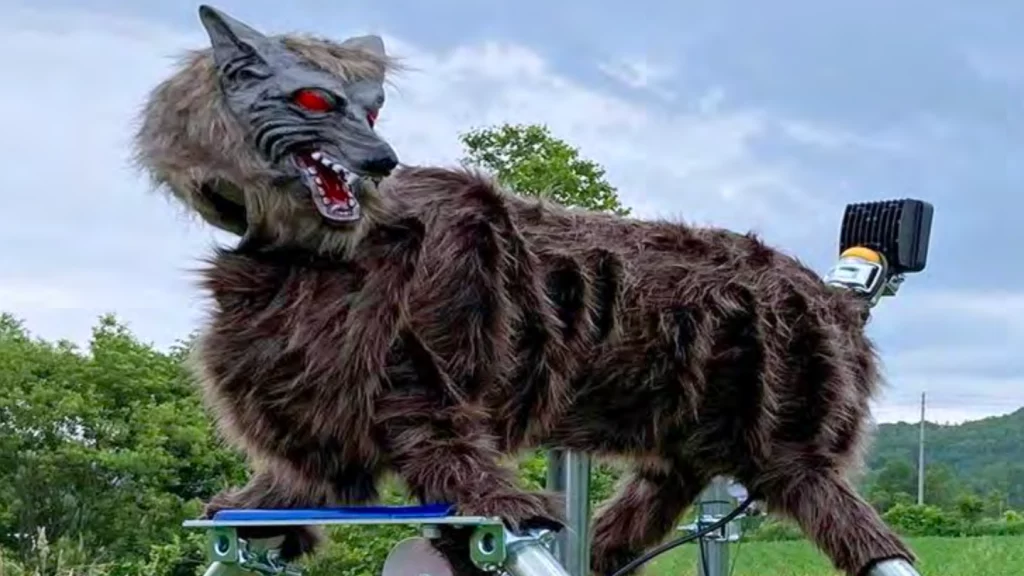The tech innovation is now being deployed by some Japanese cities to protect their populations against wild animal invasion. The robotic “Super Monster Wolves” or robo-wolf was first introduced to tackle invasive wild pigs but is now being used as well to deter wandering black and brown bears.

The solar-powered robotic wolves came into the limelight in 2017 when Japanese researchers started testing the prototype against wild boars ravaging farmlands. It has since progressed and a company, Wolf Kamuy has expanded its sales of these sentry gadgets.
The robo-wolf has menacing fangs, fur, and flashing LED eyes. Its head is capable of shaking side-to-side and the device can emit a 90dB howl. The robo-wolf is quite handy for rural Japanese communities with the fear of bears encroaching into living spaces. The robo-wolf is now being deployed as a deterrent for such bear encroachment.
The dual purpose of the super monster wolves is to protect both crops and farmers in rural communities. Recent reports have been seen on the dangers that bears pose to human activities due to possibly a shrinking of their habitat resulting from human activities.
There are indications that the bear population in some regions of Japan is increasing. It is estimated that there are about 22,000 bears located in the Hokkaido region. There have been up to 150 bear attacks in the last 60 years. However, in 2021 alone four fatalities were recorded. There are many cases reported of bears wandering into crowded towns and cities bordering wildlife areas.
It is believed that the robo-wolf’s howls effectively deterred bears from encroaching within up to 1 square kilometer radius. This is more expansive and better than any electric fence installation. When these robo-wolves are deployed expertly, they can provide protection for elderly communities and also protect the bears. The mix between the safety of the bears in their natural habitat and climate change, together with expanding development, calls for proper balancing between animal rights and human development.
Related:
- OnePlus 11R Solar Red Edition pricing revealed ahead of October 7 launch
- OnePlus Festive Season Sale: OnePlus 11, Nord 3, earbuds & TVs get heavy discounts
- OnePlus Open is the Best Foldable Smartphone Right Now, Says Company CEO Pete Lau
- Stock UI Won’t Return To OxygenOS Confirms OnePlus Head Of Software
- OnePlus Buds 3 Renders And Key Specifications Leaked
- OnePlus 11 OxygenOS 14 Open Beta 2 is live for Indian and NA users
(source)







